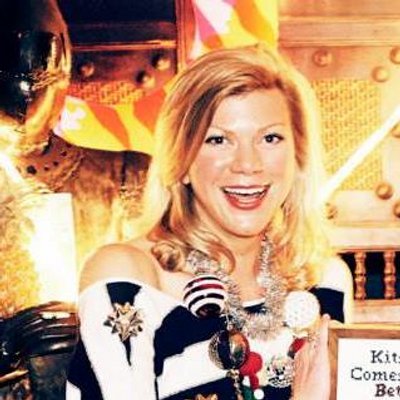How you can buy into silver at bargain prices
Silver prices may be soaring, but there's one unloved corner of the market where the smart investor can still bag a real bargain. Welcome to the world of antique silver...

We've always been great fans of silver at MoneyWeek, and it seems everyone else is getting in on the act too. But there's one unloved part of the silver market where the smart investor can still bag a real bargain. Welcome to the wonderful world of antique silver...
We love silver at MoneyWeek and have written several times about our bullish expectations for the metal's price (you can read our latest cover story on the metal here), but it isn't just silver mining shares and silver bars we like. We're also great fans of antique silver.
This as is often the case makes us pretty contrarian. The market for domestic items made out of silver has been in a long, slow decline for decades. As Philippa Glanville, senior research fellow at the Victoria and Albert museum and author of Silver in England points out, as early as the 1930s, the market was already beginning to falter as lifestyles started to change.
MoneyWeek
Subscribe to MoneyWeek today and get your first six magazine issues absolutely FREE

Sign up to Money Morning
Don't miss the latest investment and personal finances news, market analysis, plus money-saving tips with our free twice-daily newsletter
Don't miss the latest investment and personal finances news, market analysis, plus money-saving tips with our free twice-daily newsletter
Today, few people use silver regularly: polishing it is a bore and not many have the staff to delegate the job to. What's more, not only do people eat out more often than ever before, but entertaining is much more relaxed than it used to be. In this day of minimalism, silver sugar tongs, cream jugs and serving dishes seem not grand, as they once did, but faintly ridiculous. Who could have known 20 years ago, says Matthew Stuart-Lyon, head of silver at Sotheby's, that "young people would be eating in the kitchen and pouring cups of tea straight out of the kettle", or that interior design and taste could change so dramatically? "Years ago people were looking for rare little teapots" to display on their sideboards, says Stuart-Lyon. Today, they prefer "unique, sculptural pieces".
All this is bad news for those hoping to sell the family silver to finance their retirement, but it could be excellent news for savvy investors: right now, it is possible, at the least fashionable end of the market, to buy some antique silver at not much more than the value of the metal itself. This means that you get all the craftsmanship involved for free (no small bonus, given how much one pays for a craftsman's time these days) and you get a double investment exposure to the rising price of the metal and to the potential for fashion to change. After all, just because no one wants silver spoons and forks now doesn't mean they won't want them in five years' time.
So what's the most unfashionable stuff about in the silver market at the moment? One answer might be Georgian flatware, which, in inflation-adjusted terms, is actually cheaper today than it was 25 years ago. A West End retailer will charge you something in the region of £12,000 for a modern, traditionally crafted flatware service. Yet only last month, a full Georgian set weighing 154 ounces sold for £800 at Woolley and Wallis. At the current silver price of $8.96 an ounce (507p), the metal itself has an intrinsic value of £780 (melt it down and that's what you'd get on the spot market), so the purchaser paid a mere £20 for the antiquity and craft of his new spoons and forks. That seems to us to be a bargain, particularly given that nothing stays that unfashionable forever.
Indeed, at roughly the same time the hammer was coming down on the flatware sale at Woolley and Wallis, Country Life published an article on what it calls "the little-known passion of famous modern designers". And what is this passion? Yes, it's "highly collectable Georgian flatware". "It is beautiful, useable on a daily basis, almost impossible to fake" and, best of all, "hugely good value", says Leslie Geddes-Brown in the magazine, pointing out that even John Pawson, a well-known "maestro of Minimalism", is infatuated with the stuff. The designs of the 18th century, he says, are "so much more practical and elegant that some of the contortions visited on modern cutlery... the Georgian period saw the ultimate restrained fork".
The most expensive way to get into this small part of the silver market is to buy a complete set of flatware, says Geddes-Brown, comprising a dozen each of table and desert spoons, large and small forks and teaspoons all made by the same maker at the same date. This is, agree most of the experts, also the best way to buy. "If you want table silver, then buy the very best and then it will retain value whilst being usable", adds Stuart-Lyon.
Things to watch out for on the quality front are dealers who get a "mixed bag of goodies" and erase all the old family crests and initials, says John Bourdon-Smith, a London-based antique silver dealer, to make up a full but not genuine set. These might be nice to have regardless of their provenance, but they won't gain value in the same way as matched sets. Look for dips in the metal where crests have been erased. Look too at condition, taking special notice of fork prongs (if they are short, they may have been worn out and cut down) and of the general feel of the pieces. Good quality silver should feel heavy in the hand, not tinny or light. Visible repairs are also considered a bad thing when it comes to investment silver: if it is a wreck of what it once was, few people will want it. The Victorians were particularly fond of adding inscriptions, crests or symbols to older pieces, which depletes their value, warns Harry Williams-Bulkeley, director of Christie's silver department, so watch out for these.
Still, if you're buying as much for pleasure as value, there's no need to be too fussy about getting a full and genuine set, says Geddes-Brown. Many dealers, including John Walter at the London Silver Vaults, make up mismatched sets of patterns such as Old English (a plain, three-prong pattern) from around £2,000. An even cheaper option is to make up your own set by buying spoons and forks in sixes, one set at a time. This should be fun and also comes with the bonus that you will never need to worry about authenticity. "Yes, sometimes special hallmarks are grafted on to other bits of silver, but at this end of the market it is not worth the trouble." A nice tablespoon, says Walter, will cost you £40-£45 and large forks around £40-£50. Good places to buy include antiques fairs and smaller auction houses, says Glanville. Auctioneers Woolley and Wallace have been picking up a part of the market the big London auctioneers have pretty much abandoned that of smaller silver. Their next silver and jewellery sale is on 25-26 January 2006. See www.woolleyandwallis.co.uk, or call 01722-424 500.
Contacts: Sotheby's 020-7293 5000; Christie's 020-7930 6074; John Bourdon-Smith Ltd 020-7839 4714
Other good deals in the silver market
Georgian flatware aside, what other things might investors look for in the silver market at the moment? Glanville suggests considering putting some money into English art deco pieces. You will pay a premium for it, but on the plus side there isn't much of it around (English taste was already shifting away from silver in the 1920s and 1930s), so you get a scarcity value here that you don't get with 18th-century silver.
Other contemporary silvers (ie, pieces under 100 years old) are also worth looking at, says Williams-Bulkeley. But if you do go exploring in this market, make sure you avoid 1950s modern reproduction silver. For example, silver salvers at that time were seen as consumables and were often mass produced. A better bet would be items from the 1970s, which have now passed the second-hand' phase and could do well in the future.
Stuart-Lyon would take a look at some of the fabulous stand-alone decorative table pieces made by the likes of 19th-century French silversmith Aucoc. He also suggests considering niche markets, such as miniature 17th and 18th-century toys and novelty trinkets.
The collectors' market for silver spoons is also very lively. Early spoons are rare and interesting historically. At the top end of the market, a London spoon of circa 1500 can go for as much as £25,000. For the smaller investor, there's a niche market in tea caddy spoons, which can go for under £100.
Get the latest financial news, insights and expert analysis from our award-winning MoneyWeek team, to help you understand what really matters when it comes to your finances.
Emma is a former digital journalist with more than 15 years of experience in national news in the UK and overseas. She was an assistant editor at MoneyWeek, covering property, funds, alternative investments and the share tips pages, then Emma moved on to The Daily Telegraph, first as a personal finance reporter and then as a business reporter.
Emma also worked as a finance correspondent for Ninemsn (Australia’s Channel 9 online) in Sydney, Australia for just over a year, and since then Emma has worked at Channel 4 News as a reporter and producer, and she spent more than 4 years at BBC online. At present Emma is a senior manager for content and thought leadership at PwC.
-
 Investors will reap long-term rewards from UK equities
Investors will reap long-term rewards from UK equitiesOpinion Nick Train, portfolio manager, Finsbury Growth & Income Trust, highlights three UK equities where he’d put his money
-
 The graphene revolution is progressing slowly but surely
The graphene revolution is progressing slowly but surelyEnthusiasts thought the discovery that graphene, a form of carbon, could be extracted from graphite would change the world. They might've been early, not wrong.
